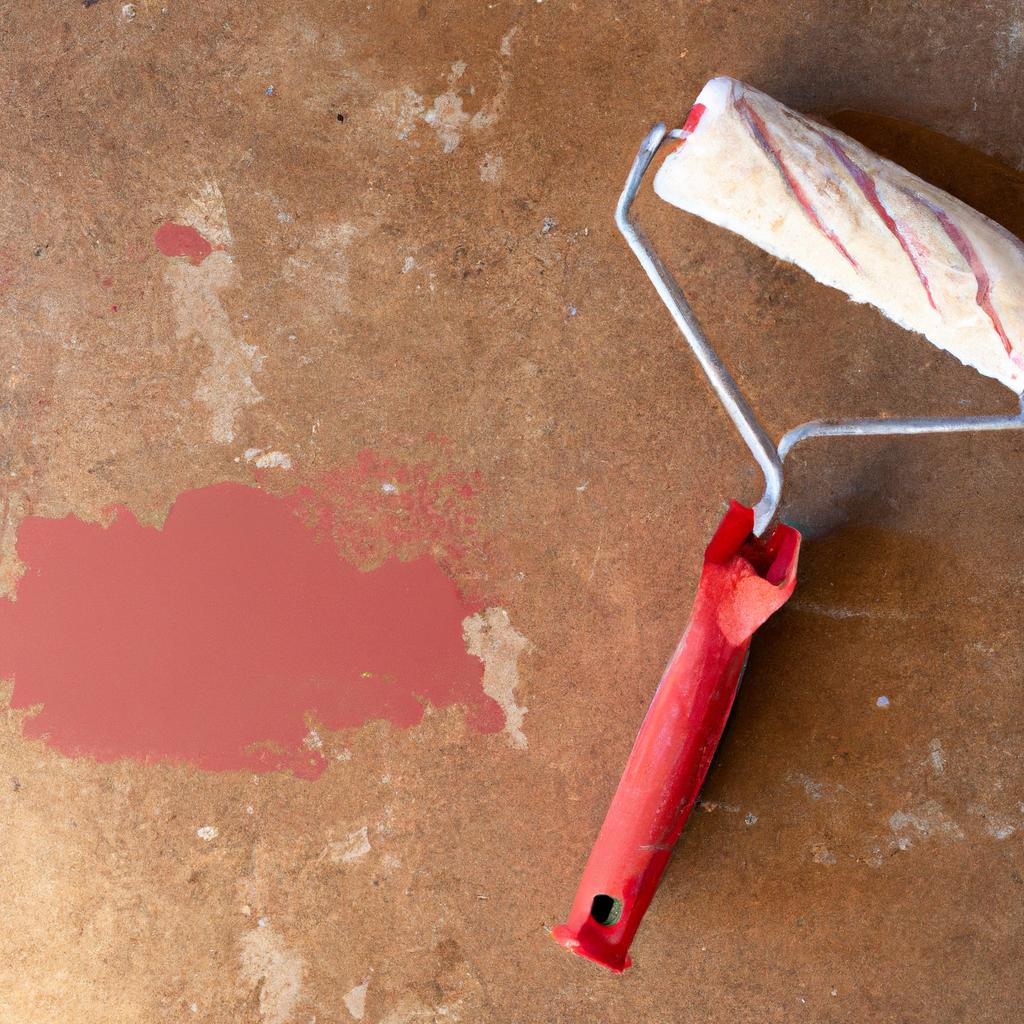Introduction: What Is Home Improvement and Why Should You Consider DIY Projects?
Home improvement is the process of making necessary repairs, renovations, or remodeling to your home. It can include anything from simply repainting walls to a complete overhaul, such as replacing windows, installing a new roof, or adding an addition. Home improvement projects often require a significant investment in time and money but can bring about positive changes to your living space.
Doing DIY home improvement projects can be a great way to save money and learn some basic skills along the way. You may find that the work can be satisfying as you improve the look and feel of your home. Plus, tackling simple projects can be empowering and help you gain confidence in your abilities. There are also some practical advantages to doing DIY home improvements – you can select the materials and style that best suit your needs, and you have full control over the process.
Whether you’re looking to make small changes or completely revamp a room in your home, there are simple DIY home improvement ideas that can make a big difference. Here are a few potential projects to consider:
- Repaint walls and ceilings
- Refinish wood floors or tile
- Install new cabinets or countertops
- Replace fixtures, such as doorknobs and light switches
- Replace windows and doors
- Lay new carpeting or flooring
Whatever you decide to do, starting with easy DIY home improvement projects can be a great way to refresh your living space without going over budget.
Measure and Prepare Your Room for DIY Home Improvement Projects
Measuring and preparing your room before beginning a DIY home improvement project is essential for ensuring the process is successful. You must ensure that you have accurate measurements of your room to allow for proper planning and purchasing of materials. Additionally, preparing your room by covering furniture, floors, and other surfaces can help protect them from damage.
To get started, use a measuring tape and take the dimensions of your room. Write them down or create a measurement sketch of the room to refer to as you plan your projects. Take into account any furniture, fixtures, or other obstacles that may affect where you can place certain pieces or tools. This information will be invaluable when it comes time to purchase supplies for your project.
Once you have your measurements, begin prepping the room for the work ahead. Start by removing any unnecessary items from the space and cover your furniture, floors, and any other surfaces you don’t want to be damaged. Put down drop cloths to protect carpets or rugs from spills or dust. Also, be sure to protect electrical fixtures that may need to be accessed during the project.
By taking the time to measure and prepare your room before beginning your DIY home improvement project, you can save yourself time and effort in the long run. Not only will you have an easier time while working, but you will also be better able to budget for materials and any additional tools you may need.
Top 10 Easy DIY Home Improvement Ideas for a Refreshing Space
Are you looking for an easy way to refresh the look and feel of your home? DIY home improvement is a great option! Here are our top 10 easy DIY home improvement ideas to help you create a beautiful, inviting, and comfortable space.
- Paint: One of the easiest ways to change the look of a room in your home is to refresh the walls with a new coat of paint. Choose a color that brings a fresh energy to the room, and you’ll be amazed at how the space will transform.
- Add Accent Wallpaper: If you’re feeling brave, why not add an accent wallpaper to one of your walls? It can add a unique detail to your room and gives you the chance to experiment with different styles and looks.
- Change Window Treatments: Another easy way to spruce up the look of a room is to update your window treatments. Consider trading out your window curtains for more modern blinds, or switch to heavier drapes for a cozier feel.
- Install Crown Molding: Adding crown molding to your walls can instantly make any room look more polished and elegant. It’s a relatively easy project to complete on your own, and the finished product will be worth the effort.
- Hang Wall Art: Spice up any room with wall art. From framed prints to canvas pieces, there are endless options available. Adding wall art can give your home an extra layer of character and charm.
- Add an Area Rug: Another simple way to add a splash of color and texture to your home is to add an area rug. The right rug can completely change the look and feel of a room, so choose wisely.
- Create a Gallery Wall: An easy and cost-effective way to refresh your walls is to create a gallery wall. This means grouping together several pieces of artwork to create a focal point in the room. It’s a great way to show off your personality and interests.
- Replace Cabinet Handles: Another quick and easy way to freshen up the look of your home is to replace the cabinet handles and knobs. Swap out your dated hardware for something more modern to instantly give your kitchen a more modern vibe.
- Reorganize Closet Space: You can give your home a fresh look and feel by reorganizing your closet space. This can include adding shelving or hanging hooks to maximize your storage potential.
- Add Indoor Plants: A great way to spruce up the look of any space in your home is to add some indoor plants. They can provide a much-needed pop of color and life to any room.
Tips for Optimizing the Impact of DIY Home Improvement Ideas
Making improvements to your home can be a daunting task, but with careful planning and thought, it can yield amazing results. Here are some helpful tips to maximize the impact of your DIY home improvement projects.
- Start simple – A great way to start is by beginning with smaller projects like painting walls, rearranging furniture, and upgrading faucets and fixtures. These small changes can make a big impact on the overall look and feel of your space.
- Prioritize functionality first – When planning out your project, make sure you prioritize functionality over aesthetics. It’s important that everything is easy to use and works well. This will ensure that you don’t have any issues down the line.
- Choose quality materials – Making sure that your materials are of good quality will pay off in the long run. Quality materials ensure durability and last longer than cheaper alternatives.
- Have a plan – When starting a DIY project, create a detailed plan for the entire process including materials, time required, and instructions. This will help you stay organized and make sure that everything goes as planned.
- Work with professionals – If you need help, there are plenty of professionals who can offer advice and assistance. Working with professionals can help you save time and make sure the job is done right.
- Take initiative – DIY projects require some hard work and determination. Don’t be discouraged if something doesn’t work out. Take initiative and find new solutions, and you will eventually get the desired result.
- Be proactive – As soon as any issues arise, take action to resolve them. Delaying the resolution can cause further damage in the long run, so it’s important to be proactive.
- Stay within budget – It’s important to stick to your budget when doing any kind of DIY project. Making impulse purchases or going over budget is only going to add to the cost and delay the project.
- Be patient – DIY projects can take a significant amount of time to complete, so it’s important to stay patient throughout the entire process. This will ensure that you get the desired result without any unnecessary stress.
- Enjoy the process – Although it can be overwhelming, DIY projects are very rewarding. Enjoy the entire process and be proud of what you have achieved at the end!
Identifying Potential Challenges When Doing DIY Home Improvement Projects
Doing DIY home improvement projects can be a fun and cost-effective way to give your space a refreshing look. However, having a good understanding of the potential challenges you may face will help ensure that your project is successful. Here are a few points to keep in mind when embarking on a DIY home improvement project:
- Time: Depending on the complexity of the project, it could take longer than expected to complete. Be sure to budget enough time in your schedule to dedicate to the project and don’t be afraid to ask for help if needed.
- Tools: Different types of tools are necessary to complete different projects. Make sure you are familiar with the types of tools needed and their proper use, otherwise you may end up having to buy more tools than necessary.
- Materials: You need to ensure that you have the right materials in sufficient amounts. It’s important to budget for the materials you need and get all the necessary items before beginning your project.
- Skills: Along with the right tools and materials, having the proper skills is key to a successful DIY home improvement project. Doing research or consulting with experts may help you gain the knowledge and skills needed to complete the job.
Being aware of these potential challenges and mitigating them as much as possible will help you to have a successful and enjoyable DIY home improvement project.
Safety Considerations for DIY Home Improvement Projects
Whenever embarking on a DIY home improvement project, safety should be your top priority. Home improvement projects involve the use of various tools and can pose risks, such as falls, electric shock, fire, and dust inhalation. To protect yourself and your family, it is important to take the necessary safety precautions.
- Wear protective gear. Protective gear, such as safety glasses, face shields, and gloves, should be worn while working on any DIY home improvement project. This will help protect your eyes, hands, and skin from potential hazards.
- Use the right tools. Always use the right tools for the job. Inexperienced homeowners may not be familiar with the different types of tools available, so it is important to do research and learn about the various types of tools and their proper uses.
- Keep your workspace clean and organized. Keeping your workspace clean and well-organized will reduce the risk of accidents, such as tripping or slipping. Additionally, make sure that all tools are stored properly and away from children.
- Follow the manufacturer’s instructions. When using power tools, read and follow the manufacturer’s instructions carefully. Pay close attention to any warnings or safety tips that the manufacturer provides.
- Unplug all power tools when not in use. Make sure to unplug all power tools, such as drills and saws, when they are not in use. This will reduce the risk of electric shock or fire.
Additionally, if you are working with hazardous materials, such as asbestos or lead paint, it is important to wear the appropriate protective gear and use caution. Also, ensure that there is adequate ventilation in the area, so that hazardous fumes do not accumulate.
It is also important to keep in mind that even though you may be embarking on a DIY home improvement project, you should never attempt any project that is beyond your capabilities. If you are unsure of how to do something, then it is best to contact a professional instead.
Choosing the Right Tools and Materials for Your DIY Home Improvement Project
When tackling a DIY home improvement project, having the right tools and materials is absolutely essential. From the basics such as drill bits and screws to more specialized materials like grout and mortar, the process of selecting the correct supplies can be overwhelming. To make the selection process simpler, here are some guidelines:
- Start by making a list of the materials and tools you will need. Don’t forget small details, such as screws, nails, glue, and caulk, which can make all the difference.
- Check your local hardware store or home improvement center for prices on the items on your list. Be sure to compare prices between stores to get the best deal.
- If you’re looking for specialty items, check online retailers who may have a better selection than stores in your area.
- Don’t be tempted to go with cheaper materials in order to save a few dollars. It’s important to choose quality materials that are up to the task.
- Ensure that you have the correct safety gear, like gloves, goggles, and masks, especially when working with hazardous materials.
- Consider renting some of your tools if they’re expensive or won’t be used regularly. This could be much more cost effective and save you from having too many tools cluttering your workspace.
By investing in quality materials and the right tools for your project, you can ensure that your DIY home improvement project goes smoothly and looks professional. Of course, it’s always a good idea to do your research before beginning your project, so you know that the supplies you purchase are up to the challenge.
Examples of DIY Home Improvement Projects
DIY home improvement projects can be simple or complex depending on the job. Some of the most common projects include painting, re-finishing floors, replacing fixtures or hardware, and updating windows and doors. Other projects that can easily be accomplished at home include installing tile, hanging wallpaper, building shelving, constructing furniture pieces, and landscaping.
Painting is perhaps the easiest DIY home improvement project and can help give any room an entirely new look at a low cost. To begin, clean and sand walls completely, then prime and paint. If you are changing colors, consider using an accent wall or fun pattern to make the space stand out. If you’re putting up wallpaper, start with a pre-pasted paper for ease of installation. If you decide to install flooring, it’s important to research the different types available and ensure you have the necessary tools to complete the job.
Installing or replacing windows and doors is another great DIY home improvement project. First, measure the current windows and doors and buy the appropriate replacement size. Be sure to pick the right materials and tools needed, such as screws, sealants, saws, levels, and caulk. Installing new windows and doors can instantly improve the energy efficiency and security in your home.
If you’re looking for an outdoor project, consider adding a fence or trellis to your garden. Fences can help keep undesired animals or items away from your property and can provide added security. They come in a variety of materials and can be stained or painted to match the existing décor. Trellises are another great addition to any outdoor space and add beauty and color to any garden.
No matter what DIY home improvement project you decide to take on, researching materials and tools needed, setting a budget and timeline, and enlisting help when needed will all contribute to a successful outcome.
Best Practices for Completing DIY Home Improvement Projects
DIY home improvement projects can quickly become overwhelming if you don’t have the right plan and strategies in place to ensure the success of your project. To make the process easier, consider using the following best practices to complete each project successfully.
First and foremost, do your research. Before starting any DIY home improvement project, it is important to understand the scope of work, tools and materials that you will need, potential challenges, and safety considerations. This knowledge will help when it comes to budgeting and purchasing the correct tools and materials for the job.
Create a timeline. When embarking on a DIY home improvement project it’s important to create a timeline so that you can keep the project on track. A timeline will also help you to identify any potential challenges before they arise, allowing you to adjust your plan and timeline accordingly.
Take your time. DIY home improvement projects require patience and attention to detail. In order to avoid costly mistakes and completing the project within your desired timeline, it is important to take your time and avoid rushing through the process.
Prioritize safety. Even if a DIY home improvement project may seem simple, it is still important to prioritize safety. Be sure to wear the proper safety equipment, follow safety protocols, and take necessary precautions when using tools or working with materials that could be hazardous.
Ask for help. If you are feeling overwhelmed by a DIY home improvement project, don’t hesitate to reach out to friends and family to help out. Having someone else on board to help can make the process simpler and quicker.
Celebrate the completion. Once your DIY home improvement project is complete, take the time to celebrate. Not only will this help to make all of the hard work feel worth it, but it’s also a great way to gain confidence for future projects!
Budgeting for DIY Home Improvement Projects
Home improvement projects don’t have to be expensive. By planning carefully and budgeting ahead of time, you can make sure that your project will meet your needs without breaking the bank. Here are a few tips to help you get started.
First, make a list of the materials and tools that you’ll need for the project. Get quotes from several different suppliers and compare prices. You may be able to save money by buying in bulk or looking for sales. Once you’ve determined what the total cost of the project will be, set aside that amount in a separate account so that you’re not tempted to overspend.
Next, estimate the amount of time that each stage of the project will take. If you hire a contractor, factor in their labor costs. If you’re doing it yourself, keep in mind that the more time you spend on the project, the more materials you’ll have to buy. Knowing how long each step of the project will take can help you stay within your budget.
Finally, set aside some money for unexpected expenses. Sometimes, you may need to purchase additional supplies or hire an expert to help with certain aspects. Make sure you have enough money in your budget to be able to cover these surprises.
By following these guidelines, you can make sure that your DIY home improvement project will stay within your budget. With careful planning and a bit of creativity, you can make your dreams of a refreshed space come true!
Conclusion
Doing DIY home improvement projects can add a touch of personalized style to your home and can also help to improve its functionality. Before getting started, it’s important to think through the project carefully and plan out what materials and tools you’ll need, as well as budget for any expenses. It’s important to remember to stay safe and be mindful of safety considerations when undertaking a DIY home improvement project.
The best DIY home improvement projects are those that are done with a bit of creativity and with an understanding of how the project should be completed. With the right preparation and planning, you can make your own DIY home improvement projects into something beautiful and unique. Taking on a DIY home improvement project is an rewarding experience that can help to transform your home in a practical and meaningful way.
Further Reading and Resources
If you are looking for further information about DIY home improvement projects, there are many useful resources available. The internet is a great place to start, as it is full of articles, blogs, and videos that can provide guidance and advice.
Books and magazines can also be extremely helpful. Many home improvement stores and online retailers carry books and magazines that provide step-by-step instructions on how to complete different types of DIY projects. Additionally, many websites offer free downloads of useful information and advice regarding DIY projects.
It is also important to be aware of safety considerations when undertaking any kind of DIY home improvement project. Before beginning a project, read through material safety data sheets (MSDS) to ensure that you understand how to properly use any materials or tools. Additionally, if you are unsure about any aspect of a project, it is best to consult a professional contractor for advice.
Finally, DIY home improvement projects can be very gratifying. When finished, you can look back with satisfaction knowing that you have done something to improve your home. With the right tools and materials, you can create something beautiful and unique that can bring you years of joy and comfort.
comments: 0



